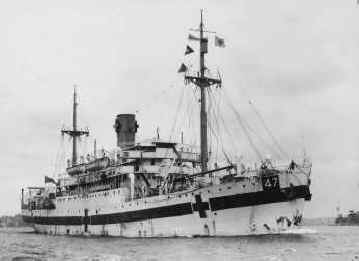At home, men and women were conscripted into industries essential to the war effort. Women had a role as nurses in the services, but as increasing numbers of men were sent overseas to fight, women were allowed and encouraged to join the Air Force, Army and Navy in new support roles. Engineers and labourers were conscripted into the Civil Construction Corps to construct landing strips, and to build roads to carry supplies to the northern front at Darwin. Women did essential work in factories but most did not receive equal pay, although they did the same work as men. Wives, sisters and mothers, aided by the Women’s Land Army, took up the burden on farms as thousands of farmers went overseas. However the main role for most women continued to be that of home maker, a job made much harder and more demanding by the blackouts, rationing, shortages and the tragedies of wartime life.

The hospital ship Centaur, which was attacked and sunk by a Japanese submarine off the east coast of Australia. Many lives were lost in this attack. (Image provided by AWM)
Wartime difficulties and shortages generally brought Australians together, but there were tensions caused by 'black market' operators, wartime restrictions, the presence of the ‘free spending’ American forces and the strikes on the wharves and in the coal mines. At times of greatest crises - such as the bombing of Darwin and the shelling of Sydney and Newcastle by Japanese submarines - some Australians acted selfishly by hoarding goods, or ignoring what was best for the community as a whole. But most Australians on the homefront did voluntary work, accepted shortages and discomforts, and supported the troops in the struggle for victory.





